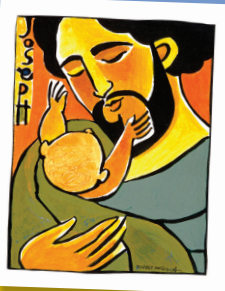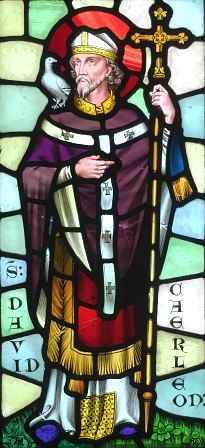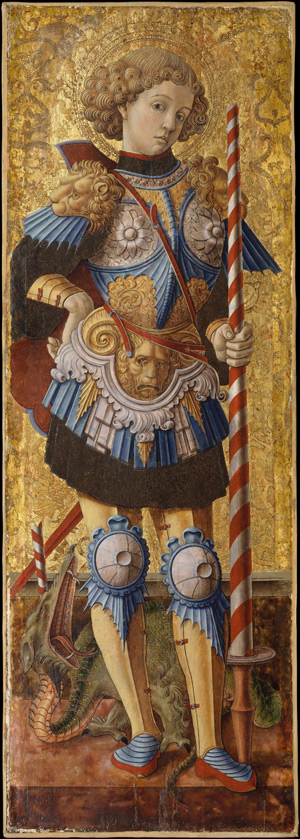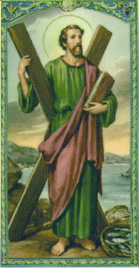St. Joseph and Class Saints
St. Joseph

Artwork: Brother Bob - Bee Still Studio
Did you know that the Catholic Church dedicates every Wednesday to St Joseph?
St. Joseph was descended from the great King David and is described in St Matthew’s gospel as “a righteous man”. He was a carpenter and a man of faith, who did what God asked of him. When an angel told Joseph in a dream about the baby Mary was to have, although he was surprised, Joseph took Mary as his wife. Soon they had to travel to Bethlehem to be counted for a census. There the baby was born in a stable and Joseph took care of Mary and Baby Jesus. Then, in another dream, an angel told Joseph of danger for the baby, so he left everything, to take Mary and Baby Jesus away to safety in Egypt. When it was safe to return, Joseph brought his family back to live in Nazareth, where Jesus grew up. Joseph also took his family to Jerusalem every year at Passover time, as God asked. Once, when his parents had lost the boy Jesus, Joseph searched for three days before finding Jesus, safe in the Temple at Jerusalem.
Joseph knew all about family life. He was a working man who worked hard as a carpenter, to support his family. He was a faithful husband and guardian to Mary, Jesus’ mother and a fatherly example (foster father) to Jesus, teaching God’s laws and the scriptures: helping his family to know and love God.
In Our school and The Church celebrates two annual feast days for St Joseph: on March 19th (Patron Saint of Families) and on May 1st (Patron Saint of Workers). We thank God that St Joseph remained God’s servant and is now a saint in Heaven ready for us to call upon in prayer. We can tell all our family needs to him, knowing he will bring them before God on our behalf.
(Wednesday Word)
Class 1
Saint. David

David was born about 520 near St. Bride’s Bay, Pembrokeshire, Wales. There is very little known about his life. Most of what is believed about his life comes from a biography written in about 1090 by Rhygyfarch, a Welsh scholar. According to Rhygyfarch, David was the son of a leader named Sant and Non, a woman who later was named a saint.
David became a Christian priest. He then lived on an island for many years to study the Bible.
Once he left the island, David founded a monastery, or religious house, at Mynyw (Menevia) in southwestern Wales. Life at David’s monastery was very strict. The monks who lived there had to work very hard. They were rarely allowed to speak. They ate only bread with vegetables and salt. They drank only water.
David founded many churches throughout southern Wales. He later moved the center of the church government from Caerleon to Mynyw. David died in about 600 in Mynyw.
Feast of Saint David
Saint David’s Day is celebrated every year on 1 March, the traditional death date and feast day of Saint David. The holiday is celebrated all over Wales, with many towns hosting parades and concerts. In Cardiff, the capital of Wales, there is a concert of traditional Welsh music held in Saint David’s Hall. People often pin the two national symbols of Wales, the daffodil and the leek, to their clothes on Saint David’s Day.
Class 2
St George
Saint George is the Patron Saint of England.
His Feast Day is celebrated on 23rd April.
George is thought to have been a soldier in the fourth century who courageously defended his faith and encouraged his fellow Christians. He was a popular saint in the East.

By the sixth century St. George had become an ideal Christian knight, and the legend of his slaying the dragon had become a familiar story. George’s fame spread to Europe, where stained glass windows from the seventh and eighth centuries depicted this legend.
The story tells of a dragon that terrorized the land and poisoned with its breath all who approached it. The dragon was fed sheep and then human beings chosen by lot. The day the king’s daughter was to be served to the dragon, George came along. He slew the dragon and was offered anything he wanted for killing it. George refused any reward, but he made the king promise to build churches, honor priests, and show compassion to the poor. This act made George so popular that he came to reflect all the ideals of Christian chivalry.
When the English king Richard I led his soldiers in the Crusades, he placed his army under George’s protection. In one famous battle, the Christians were losing until, as the army leaders later insisted, St. George rode forward and led the troops to victory. From then on, George became the patron of England. King Edward III founded an order of knights under his patronage, and his feast was kept as a national festival.
Although the stories of St. George may be untrue, no one can deny his real act of heroism: dying for Christ.
information from https://www.loyolapress.com/catholic-resources/saints/saints-stories-for-all-ages/saint-george/
Class 3
Saint Andrew
Saint Andrew is the Patron Saint of Scotland.
His Feast day is celebrated on 30th November.

Saint Andrew was one of the Twelve Apostles of Jesus Christ. His brother was Saint Peter. Saint Andrew is the patron saint of Scotland and of Russia.
Andrew and his brother were fishermen. They were called from their fishing by Jesus, who promised to make them fishers of men. Andrew is always among the first Apostles listed in the Gospels of Matthew, Mark, and Luke. In the Gospel of John, Andrew is the first apostle named and was also a disciple of Saint John the Baptist before Jesus’ call.
Andrew may have preached in Greece after the death of Jesus. According to one account, Saint Andrew died in what is now Pátrai, Greece, sometime before 70 ce. He was reportedly killed by crucifixion, or by being hung on a wooden cross. The cross was later described as X-shaped. The X-shaped cross is depicted on the Scottish flag.

Saint Andrew is the patron saint of Russia because it is believed that Andrew preached in Russia, travelling as far as Kyiv.
In Scotland one story says that Saint Rule brought some relics, or bones, of Saint Andrew from Pátrai to Scotland to keep them safe. He built a church at what is now Saint Andrews to protect the relics. Later, in the 1100s, Saint Andrews Cathedral was built there as well. It was the largest building in Scotland for hundreds of years. Pilgrims travelled there from all over. Saint Andrew therefore became the patron saint of Scotland. Saint Andrew’s feast day is November 30.
